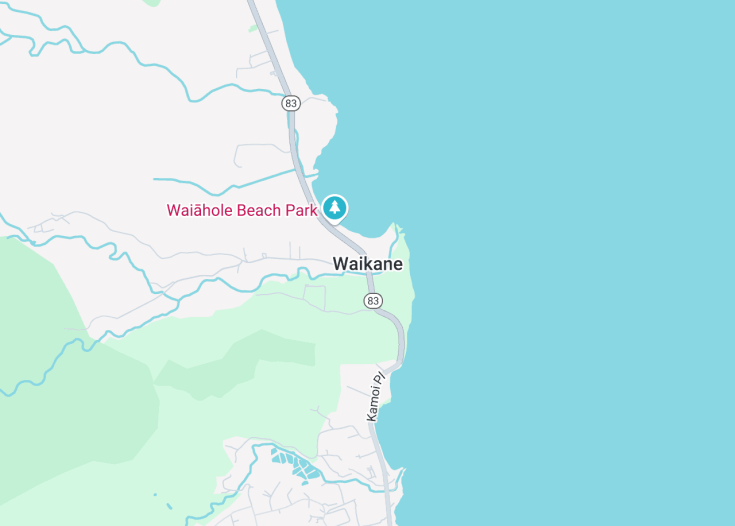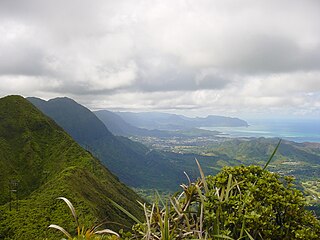Nestled on the windward coast of Oahu, Waikane offers a serene escape into nature’s embrace. This quaint area is famed for its lush landscapes and traditional Hawaiian atmosphere, providing a unique glimpse into island heritage and rural charm. Visitors to Waikane can explore thriving taro fields, wander through verdant tropical forests, and enjoy scenic views of the Koolau Mountains. The community’s proximity to larger towns like Kaneohe ensures easy access to amenities while preserving its peaceful, secluded feel. Ideal for those seeking tranquility away from the tourist crowds, Waikane presents an authentic Hawaiian experience.
Bring comfortable walking shoes and a good camera to capture Waikane’s stunning natural scenery and diverse wildlife.
Plan your visit during the spring or early summer for the best weather and full bloom of the local flora.
Top things to do & see in Waikane
Select the following sights and activities to discover best tickets and tours available in Waikane.
Waikane: A Serene Escape
| Country | Hawaii (USA) |
| Time in Waikane | GMT-10 |
| Language spoken | English |
| Population | 778 (source: Latest Census) |
| Currency | US Dollar (USD $) |
| Airports |
|
Waikane, a hidden gem nestled on the windward coast of Oahu, offers a unique blend of tranquility and natural beauty that captivates locals and visitors alike. Known for its lush landscapes and vibrant history, the area is imbued with a serene charm that reflects its historical roots as part of rural Oahu.
With a population of just under 800 residents, Waikane maintains a small-town feel that is increasingly rare in other parts of the island. The community’s intimate size contributes to its peaceful atmosphere, making it a perfect escape for those looking to experience a slower pace of life amidst Hawaii’s stunning scenery.
Waikane’s rich history is palpable as ancient heiaus (temples) and cultural landmarks dot the landscape, telling stories of the indigenous Hawaiian people and their deep connection to the land. These cultural treasures are complemented by the area’s lush botanicals and wildlife, making Waikane a fascinating destination for history buffs and nature lovers alike.
The coastline offers breathtaking views of the Pacific Ocean, and on a clear day, one can see the contours of neighboring islands. Local farms contribute to the community’s sustainability, producing a variety of tropical fruits and vegetables that uphold the island’s agricultural heritage.
With few commercial developments, Waikane remains largely untouched by the tourism industry, offering a genuine experience of Hawaii’s vibrant culture and traditions. Whether it’s exploring the hiking trails that traverse through ancient forests or soaking up the sun at secluded beaches, Waikane provides an authentic Hawaiian adventure.
Where is Waikane?
Located on the northeastern coast of Oahu, Waikane is embraced by lush greenery and fronts the serene Pacific Ocean.
Distances:
| Route | Distance by car | Time by car |
|---|---|---|
| Honolulu to Waikane | 24 miles | Approx. 50 minutes |
| Kailua to Waikane | 20 miles | Approx. 40 minutes |
| Haleiwa to Waikane | 35 miles | Approx. 1 hour |
What is Waikane famous for?
Waikane is famous for its historical significance and preserved natural landscapes. It offers a rare insight into traditional Hawaiian culture and a serene retreat from the urban hustle.
History
Pre-Colonial Period (Before 1778)
Waikane, located on the windward coast of Oahu, Hawaii, has a rich history closely tied to the native Hawaiian culture. Before the arrival of Europeans, Waikane and its surrounding areas were inhabited by native Hawaiians who thrived in these fertile lands. The community was deeply rooted in the traditional land division system known as Ahupua’a, which extended from the mountain to the sea, providing all the resources needed for sustenance and societal activities. These lands were managed by chiefs (Ali’i) who oversaw the well-being of their people through sustainable practices and spiritual guidance.
Monarchical Hawaii (1778-1893)
With the arrival of Captain James Cook in 1778 and subsequent Western influences, Waikane saw significant changes. During the Kingdom of Hawaii period, Waikane became part of the broader political and economic transformations occurring across the islands. Notably, this period saw the introduction of new agricultural practices and crops, which included sugarcane and pineapple, profoundly impacting the local economy and landscape. The area’s natural beauty began to be recognized beyond its utilitarian prospects, laying the groundwork for its later significance in both local and tourist realms.
Territorial Period and Statehood (1898-1959)
Following the overthrow of the Hawaiian monarchy and Hawaii’s annexation by the United States in 1898, Waikane entered the territorial period which led to increased American influence on the islands’ governance and culture. During this time, infrastructural developments began to take shape, including the construction of roads and the introduction of modern amenities. These changes facilitated easier access to Waikane and integration with other parts of the island, further enhancing its appeal as a place to visit and reside.
Modern Era (1960-Present)
In recent decades, Waikane has transitioned from its agricultural roots toward a more diversified economy, with tourism playing a significant role. Despite this shift, the community has maintained a strong connection to its past, with many residents continuing to practice traditional Hawaiian customs and preserve the natural environment. Today, Waikane is cherished not only for its scenic beauty but also for its cultural heritage, embodying a blend of historical richness and contemporary Hawaiian lifestyle.
Visit Waikane
What to See and Do in Waikane, Hawaii (USA)
Waikane is a true gem for nature lovers and those seeking a peaceful retreat. Key attractions include:
- Exploring Waikane Valley: Known for its lush landscapes and vibrant wildlife, hiking through the Waikane Valley offers a chance to connect with the natural beauty of Hawaii.
- Kaneohe Bay: Engage in water activities such as kayaking and snorkeling in the clear blue waters of Kaneohe Bay.
- Cultural and Historical Sites: Visit local heiaus (sacred Hawaiian temples) and learn about the rich native history of the area.
Waikane also serves as an excellent spot for photography enthusiasts, offering picturesque views of the Koolau mountain range and serene waterfront scenes.
Annual Events in Waikane
Waikane hosts several annual events that celebrate its unique culture and natural surroundings, mainly during the summer months. These include cultural festivals that feature traditional Hawaiian music, dance, and food, often held at community centers or along the bay shores.
Best Time to Visit Waikane
The best times to visit Waikane are between April and October. During these months, the weather is most favorable, with less rain and more sunny days, making it ideal for outdoor activities and exploring the natural landscapes.
Is Waikane Worth Visiting?
Waikane is undoubtedly worth visiting for those who appreciate nature and quietude away from bustling tourist centers. Its scenic landscapes, cultural sites, and the genuine aloha spirit of its residents offer a unique Hawaiian experience. However, those seeking nightlife or extensive shopping facilities may find it less appealing. Accessibility might be a concern for some, as Waikane is somewhat removed from Oahu’s main urban areas, requiring some travel planning.












